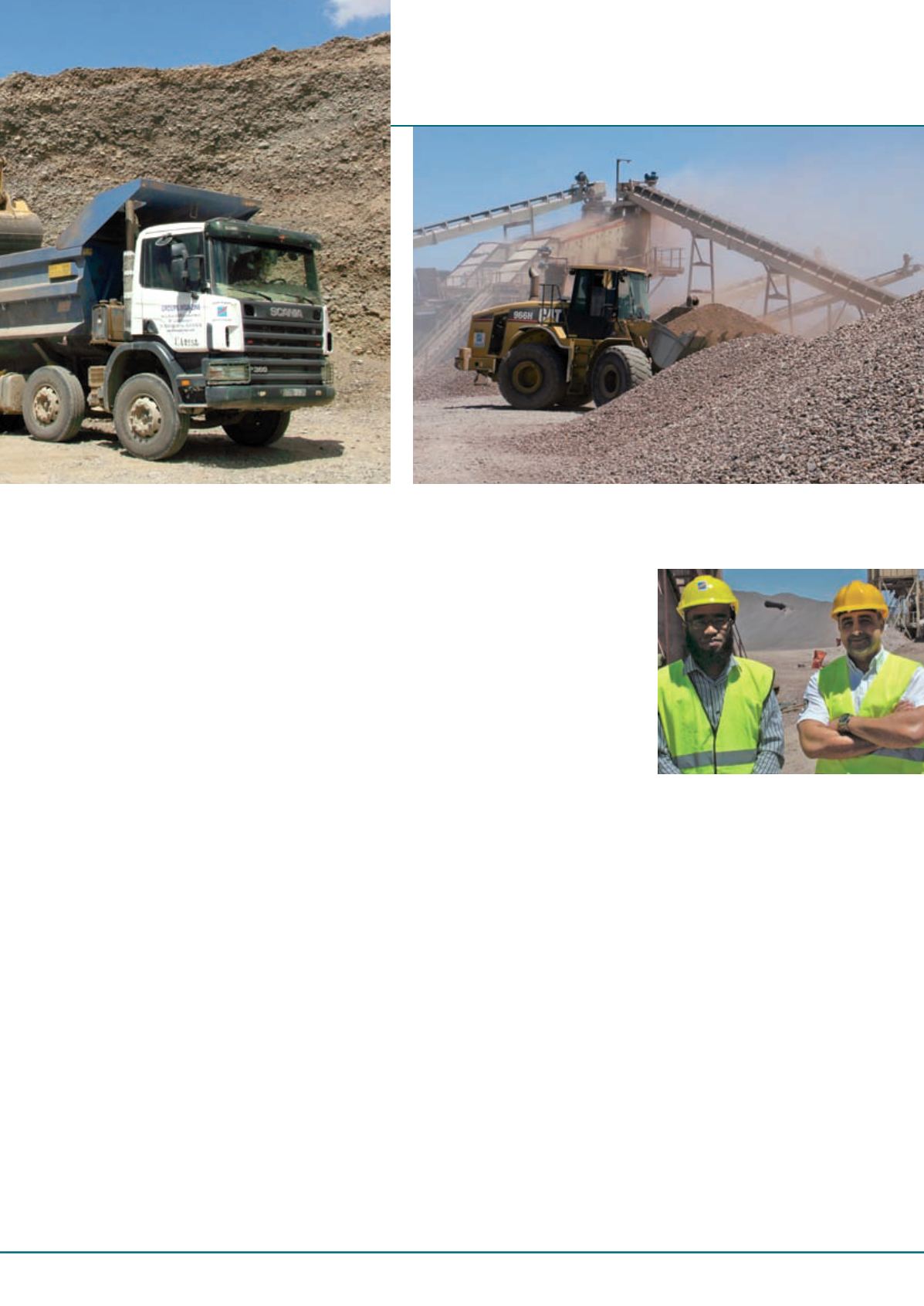
57
july-august 2013
international
construction
SITE REPORT
Reaping the rewards
The company also runs a fleet of more than 100 on-highway
trucks, most of which are Volvos, but with a significant number
of Scanias in the mix.
And it is a relatively young fleet. According to Adil Laaribi,
head of Mojazine’s equipment department, most of the machines
were bought five years ago or so. “We made a big investment in
equipment in 2008 and 2009. It was a risk but it paid off,”
he said.
The modern and youthful fleet is something Mr Laaribi sees as a
key success factor for the company, as is the working relationship
that has developed between Mojazine and Tractafric. “The
equipment is a strong point for us. A strong brand backed by a
strong dealer helps us to be competitive. You need a long-term
vision when you chose a partner, and we have had problems with
other suppliers and their local dealers,” he said.
The company makes use of the Product Link telematics system
offered by Caterpillar on its machines, a level of sophistication Mr
Lamlyah said was unusual among the dealer’s customers. However,
Mr Laaribi was enthusiastic about the benefits it offered.
“This is the solution offered by Caterpillar and Tractafric to
follow equipment very closely. We use Product Link to manage
the fleet and track the number of hours. We can plan the
maintenance of the machines accurately. It also helps prevent
breakdowns because it sends alerts. Basically it increases the up-
time. It also helps us to monitor fuel consumption and prevent
theft of fuel,” he said.
Aggregates production
Mojazine operates four quarries around Marrakech to feed its
own construction businesses. The extraction part of the operation
is fairly straightforward, as the sites are dried river beds.
This means there is no need for any blasting or even ripping.
The material is loose enough to be excavated by one of the
company’s many 20 tonne class Cat
tracked excavators.
The journey to the fixed crushing
and screening plants is made using
Mojazine’s on-highway trucks, as the
ground conditions are firm enough and
the gradients shallow enough that more
expensive off-highway haulers are not required.
The crushing plants themselves are built around Metso crushers.
Mojazine favours C110 jaw crushers for primary work and
HP200 cone crushers for further reduction and to help produce
aggregates that are as cubic in dimensions as possible.
This setup gives the company the flexibility to produce six
individually sized products in various grades from 0 to 25 mm
using the cone units as secondary and tertiary crushers. It can also
produce a 0 to 31.5 mm grade direct from the jaw crusher.
This allows it to produce 200 tonnes of aggregates per hour at
each facility if required, and it is the basis for production at all
four of the company’s quarries.
The fact that the feed material is river gravel and sand means
oversized boulders are not a huge problem for the crushing plants.
However, the relatively high amount of fines means the company
is looking into dust suppression systems for its conveyors as well
as a cyclone washing system at the quarry near its headquarters in
Sidi Ghanem for sand washing.
Further plans for this site include a pre-cast concrete plant to
produce standard components such as pipes, blocks and paving
slabs.
With the Moroccan economy expected to keep growing
and Marrakech itself continuing to attract tourists, Mojazine’s
investment in a modern fleet and its commitment to modern
techniques to manage the machines should continue to stand it in
good stead.
iC
rewards
Stockpiling products using a Cat
966H loader at Mojazine’s quarry
near Tahnaout, some 20 km south of
Marrakech.
Groupe Mojazine’s
Adil Laaribi (left)
with Tractafric’s
Mohamed
Lamlyah.


